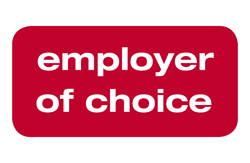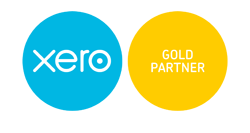7 SMSF trustee responsibilities you must understand
Running your own self-managed super fund (SMSF) can provide a great means of managing your retirement savings, with the potential for more control, greater choice and lower costs. In fact, more than one million Australians are now members of an SMSF.
However, the administration and management of an SMSF is not always easy and the decision to take on the responsibility of managing your own superannuation should not be taken lightly.
Each member of an SMSF is required to be a trustee of the fund (either as an individual or as a director of a corporate trustee). As an SMSF trustee you take on the responsibility for the fund’s performance and have certain obligations to comply with self-managed super fund rules.
Managing your own retirement funds can be very rewarding, but here are some of the key responsibilities that you need to be aware of.
1. Make sure a self-managed super fund is right for you
Your responsibilities begin before you even start. With the increasing popularity of SMSFs, it is tempting to rush in and set one up, however running an SMSF is not for everyone.
Do your research and consider seeking professional advice before making the decision to set up an SMSF.
You should consider all superannuation options before you decide to manage your own fund. You need to make sure that the fund suits your personal circumstances and that the time spent managing your fund will pay off in terms of your fund doing as well or better than other superannuation options.
Your SMSF also needs to be viable with consideration to the balance of the fund and the costs of running it. When deciding whether you have enough money to set up your own fund you need to consider running costs such as set-up fees, ongoing accounting and administration, legal and tax advice, audit fees, the ATO supervisory levy, investment-related fees, wind-up fees, as well as the ‘cost’ of your own time.
Your balance should also be large enough to allow you to invest wisely, for example to support diversification which may be more difficult with a small balance.
There is no legislative minimum balance requirement but, as a guide, the Australian Securities & Investments Commission (ASIC) suggests a minimum of $200,000 to be cost-effective. However, we recommend you seek professional advice regarding an appropriate starting balance for your personal circumstances.
By deciding to set up an SMSF, you are choosing to take personal responsibility for both the selection and the management of the fund’s investments and the legal compliance of the fund.
Running an SMSF demands time, commitment, knowledge and professional support.
2. Understand your SMSF’s framework
Your fund’s structure
The specific requirements for your fund will differ depending on how it is set up, in particular whether it has a single member, individual trustees or a corporate trustee. The ATO provides information on their website about whether to choose individual trustees or a corporate trustee.
Your fund’s trust deed
“A trust is an arrangement where a person or company (the trustee) holds assets (trust property) in trust for the benefit of others (the beneficiaries). A super fund is a special type of trust, set up and maintained for the sole purpose of providing retirement benefits to its members (the beneficiaries).”
(ATO Self-managed super funds: Create the trust and trust deed)
Your fund’s trust deed will need to be prepared by a qualified professional as it is a legal document. However, you need to be confident that you fully understand your trust deed, as (in conjunction with superannuation law) it sets out the rules by which your fund operates.
As well as being the instrument that establishes the fund, your deed sets out factors such as the structure of the fund, your investment strategy, who can be beneficiaries and how benefits can be paid.
These are important decisions that determine the direction of the fund. You are responsible for ensuring the decisions are well considered and correctly documented.
3. Comply with Superannuation regulations
Becoming the trustee of an SMSF demands a commitment to understanding and keeping up with the rules and regulations surrounding SMSFs. You (and any other trustees) need to make sure the fund is compliant with numerous regulations:
- the provisions of super law, including
- Superannuation Industry (Supervision) Act 1993 (SISA)
- Superannuation Industry (Supervision) Regulations 1994 (SISR)
- the Income Tax Assessment Act 1997 (ITAA 1997)
- the Tax Administration Act 1953 (TAA 1953)
- the Corporations Act 2001
- and other general rules, such as those imposed under other tax and trust laws.
Compliance obligations for SMSFs include:
- Each year you need to prepare and lodge your fund’s annual return with the ATO. This involves preparing financial accounts and statements that meet the accounting standards, reporting member contributions and paying the SMSF supervisory levy.
- You must keep comprehensive records, including accurate tax and accounting records, minutes regarding all trustee meetings and decisions (regarding investments or any other matters affecting the fund), trustee declarations recognising their obligations and responsibilities, and copies of all reports given to members.
- You need to arrange an annual audit by an approved SMSF auditor.
Many SMSF trustees engage an administrator who will save you time by managing most of the compliance obligations and day-to-day running of the fund. Your choice of administrator is important and, while there are many ‘cheap’ services now on offer, considerations should be given to both the fee structure and the relationship that you will have with your administrator. A good fund administrator will:
- give you timely and accurate advice,
- be upfront about their fees,
- offer a comprehensive service including accounting, reporting, record keeping and technical support,
- have systems that reduce your paperwork and simplify your dealings with third-parties,
- keep abreast of changing regulations and run regular compliance checks,
- work closely with your fund’s auditor, and
- help you understand the rules and regulations to support you in making decisions for your fund.
In the SMSF Regulator’s Compliance Update, November 2015, the importance of good record keeping was highlighted:
“Where the trustees are not able to provide the auditor with the requested documentation, it becomes a reportable contravention. Administrative penalties can also apply if it is found that trustees have not kept and maintained records in accordance with the super laws.”
Most SMSFs engage help such as an adviser, accountant, administrator and/or lawyer. However, while you can take some of the pressure off by engaging professional help, the ultimate responsibility for the fund and all decisions made always lies with the trustees. It is therefore critical that you engage professionals with a solid track record in the self-managed super fund industry, with whom you can work collaboratively and develop lasting relationships.
See more about the professional help you may need in this short video: SMSFs You Can’t Do It All Yourself
4. Make sure you are in it for the right reasons
Your fund has to be created and maintained for the sole purpose of providing retirement benefits to the members (or their dependants if a member dies before retirement). The sole purpose test is a cornerstone of SMSF law and is designed to protect your retirement savings.
If your fund does not operate for this sole purpose it will not be eligible for the attractive tax concessions which are normally available to a compliant SMSF. Even more seriously though, trustees may face civil and criminal penalties.
In their document Running a self-managed super fund, the ATO says “The most common breaches of the sole purpose test are:
- making investments that offer a pre-retirement benefit to a member or associate
- providing financial help or a pre-retirement benefit to someone at a financial detriment to your fund.”
It is your responsibility as a trustee to ensure your fund does not contravene the sole purpose test, including:
- keeping the money and assets of your SMSF separate from any other money or assets,
- not having the assets of your SMSF in another entity’s name,
- not using any of the assets of your SMSF for your own personal use or allowing members or related parties to use those assets, and
- not storing collectables and personal-use assets (for example, artwork) in the private residence of any related party of the fund.
When making decisions as a trustee you are responsible for considering the “character and purpose” of your investment and ensuring that all decisions are aligned with the fund’s purpose.
5. Invest wisely
While managing your own superannuation fund does give you flexibility and control when it comes to investing your fund’s money, you must always invest according to the fund’s trust deed, investment strategy and superannuation law.
The trustees of the fund make all the investment decisions for the fund; you are responsible to develop, implement and regularly review your investment strategy and portfolio. This means understanding your investment options and legal obligations, which requires making time to research and manage your investments. When you are managing your own superannuation fund bad investment decisions can lead to severe consequences including poor financial returns and legal penalties.
Whether you engage an adviser or not, it is your responsibility to understand your options and become a confident and knowledgeable investor.
Your investment strategy needs to maximise the fund while considering the objectives of the fund and personal circumstance of the members. All investment options carry risk so you also need to consider the balance of risk versus potential financial return.
6. Stay within the limits
To ensure that contributions are made to your SMSF for retirement purposes only, there are minimum standards for accepting contributions (these are minimum standards; the trust deed of your fund may have more rules regarding contributions). There is also a maximum amount, or “cap”, that can be contributed to superannuation on a yearly basis.
One of the more common mistakes that we see is funds exceeding the annual concessional contributions cap. While this can affect anyone in superannuation, an added complication for SMSFs is that many funds have their administration tasks completed annually, and in arrears. Because of this, members may not find out that a contribution has pushed the fund over the contributions cap until the fund’s accounts are reviewed, which could be months after the end of the relevant financial year.
At Synectic, to help avoid this situation and the resulting excess contributions tax, we have implemented systems that enable us to work with real-time data and communicate regularly with our SMSF trustees and advisors.
7. Continually reassess and respond
The trustees of the fund are responsible for continually reassessing the circumstances of the fund and its members and responding accordingly. This includes:
- Regularly reviewing and amending the trust deed, investment strategy and investment portfolio.
- Revisiting members’ personal circumstances (for example, bankruptcy, overseas travel, loss of mental capacity, or relationship breakdown between members of the fund) and understanding the impact of these on the fund.
- Monitoring members’ retirement plans and understanding what changes when one or more members are ready to retire.
- Knowing when members are ready to access benefits and how to go about it.
Note, the situations where you can gain early access to money in your fund are severely limited. Generally, a member will need to reach preservation age and satisfy the conditions of release set out in the trust deed. Read more in our blog: When can your SMSF benefits be paid? - Knowing when to wind up the fund and how.
The decision to wind up your fund could be influenced by a range of changes in circumstances, including your ability or willingness to continue running the fund and managing the investments. Your trust deed will set out instructions for winding up the fund and you will need to make final arrangements such as payout or roll-over members’ funds, arrange a final audit and annual return, and pay any outstanding tax/debts.
Finally…
As the fastest growing and largest sector of the superannuation industry, SMSFs are proven to have widespread appeal. More and more Australians turn to SMSFs to hold their retirement savings; drawn by the opportunity to control their own funds, access a wider range of investment choices and potentially pay lower fees.
Remember, each trustee is responsible for the fund (and cannot be paid for performing the role). As an SMSF trustee it is your duty to protect the assets of the SMSF and to ensure that the fund meets the needs of the members and remains compliant with relevant rules and regulations.
Providing that you understand and uphold your responsibilities as a trustee of your fund, managing your own superannuation can be very rewarding.
Synectic Super, a specialised SMSF administration division of Synectic, can work with you to help you manage, protect and grow your SMSF. We provide you, as trustee, with peace of mind in the knowledge that your SMSF’s growth potential is maximised and, importantly, your fund is compliant in all respects. Contact us today to find out more.













